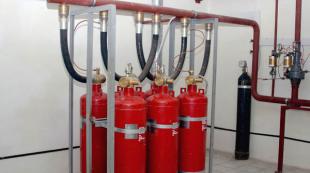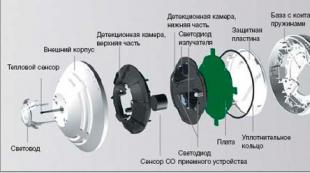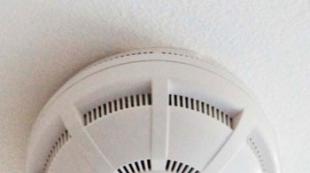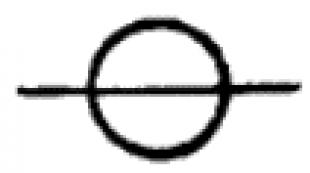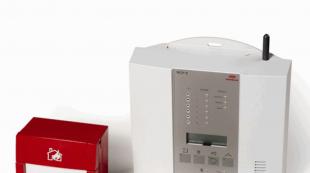Choosing the best gas fire extinguishing module
NPF Garant carries out development and installation automatic systems gas fire. The cost of design and installation depends on the specifics of the facility and individual customer requirements.
Only technically competent employees who have passed the necessary training and advanced training work for us. This allows you to confidently solve engineering problems of any complexity. The activity is licensed, there are all relevant certificates and approvals.
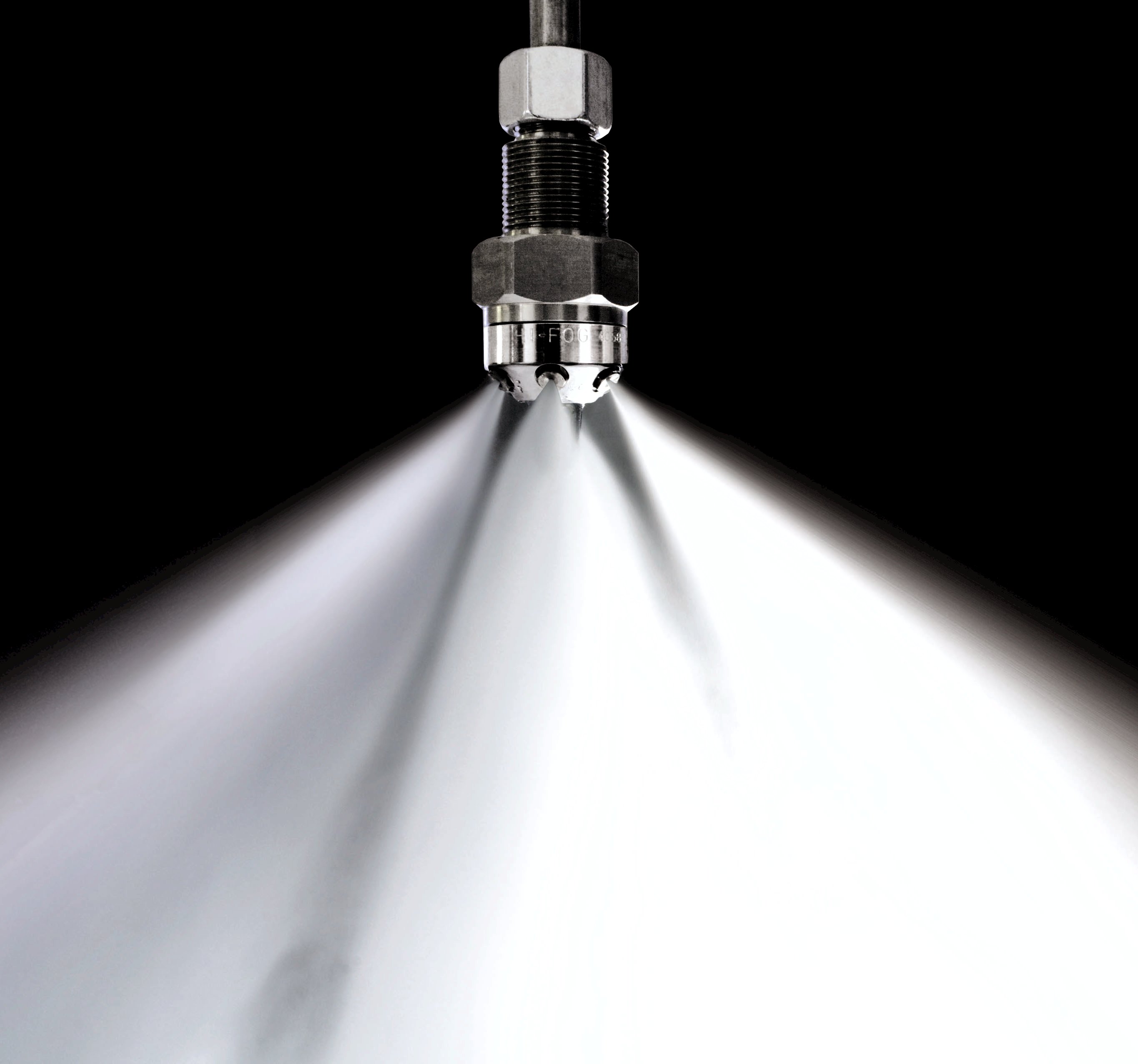
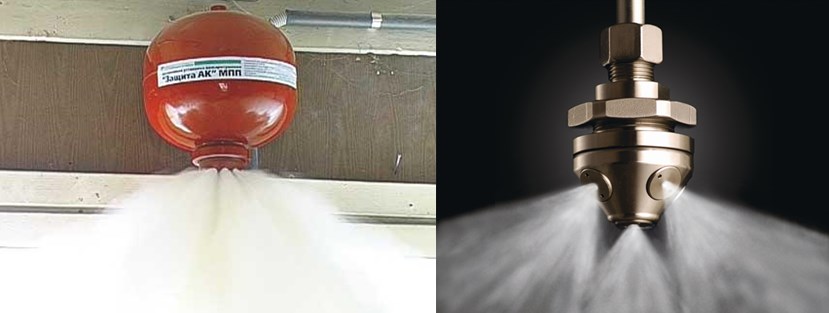
Features, advantages and scope
Automatic gas fire extinguishing installations (AUGP) are a set of technological modules, pipelines, nozzles, sensors and starting devices designed for the rapid elimination of fires. When a fire is detected, the system releases GOTV throughout the entire protected area. Depending on the type of substance, chemical combustion inhibition (chladones) or a decrease in oxygen concentration (inert gases) occurs, due to which combustion becomes impossible.
Equipment catalogSuch substances do not have a harmful effect on equipment and other values, therefore, gas fire extinguishing systems are widely used to protect:

Server rooms

Telecommunication and computing centers
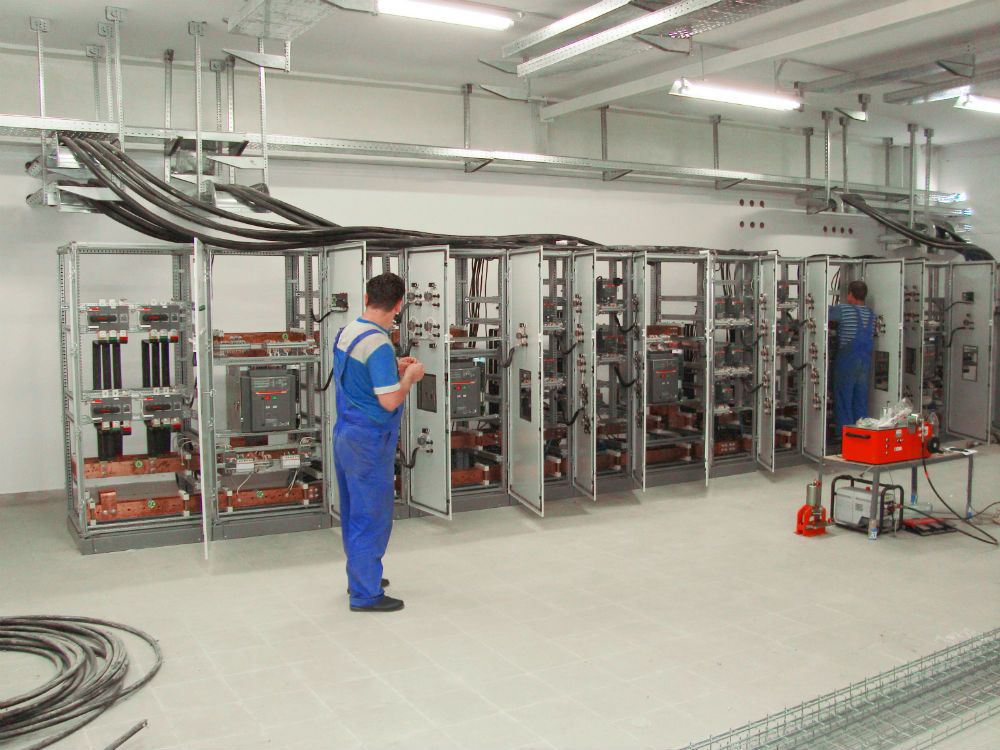
Switchboard

Bank vaults

Historical archives

Museums and Libraries
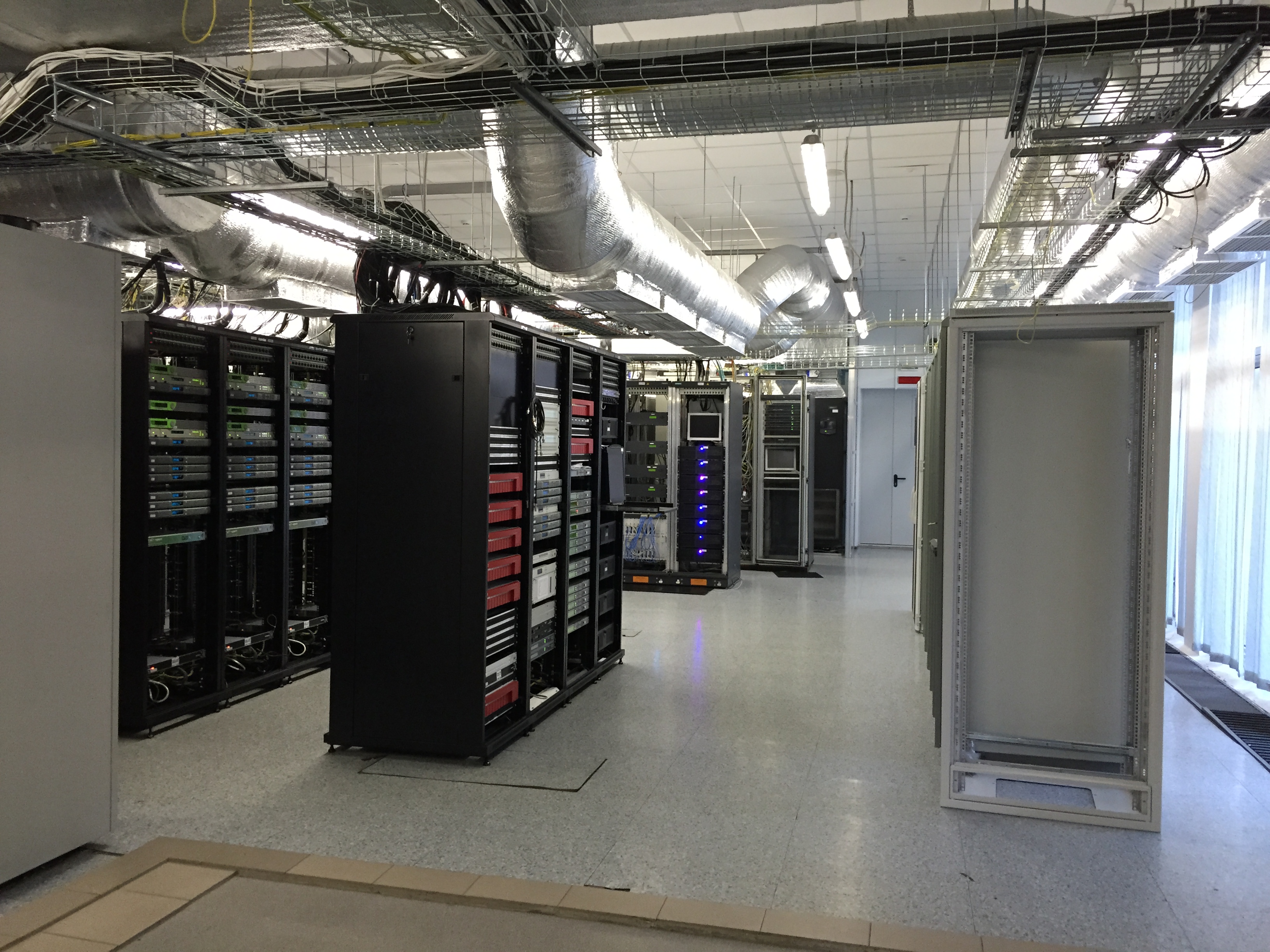
Hardware rooms

Explosive rooms

Art galleries, etc.
|
Special conditions or restrictions |
Fire extinguishing concentration,% |
Applicability Conclusion |
|
|---|---|---|---|
|
freon 23) |
In places where the personnel exit cannot be ensured within one minute, the concentration should not exceed 30%. Where personnel can exit within 30-60 seconds, the concentration should not exceed 50%. The concentration of HFC-23 can exceed 50% only in rooms that are usually not occupied by personnel, provided that personnel who are there can leave the premises within 30 seconds. Further, the entrance without protective equipment is unacceptable until the reagent is degassed. |
||
|
freon 125) |
In places where the personnel exit cannot be ensured within one minute, the concentration should not exceed cardiotoxic NOAEL of 7.5%. Where personnel can exit within 30-60 seconds, the concentration should not exceed 10% of the cardiotoxic LOAEL. The concentration of HFC-125 can exceed 10% only in rooms that are not usually occupied by personnel, provided that personnel who are there can leave the premises within 30 seconds. Further, the entrance without protective equipment is unacceptable until the reagent is degassed. |
Suitable with some restrictions for use in rooms with staff |
|
|
freon 227еа) |
In places where the personnel exit cannot be ensured within one minute, the concentration should not exceed cardiotoxic NOAEL of 9%. Where personnel can exit within 30-60 seconds, the concentration should not exceed 10.5% cardiotoxic LOAEL. The concentration of HFC-227ea may exceed 10.5% only in rooms that are not usually occupied by personnel, provided that personnel who are there can leave the premises within 30 seconds. |
Suitable for use in rooms with staff |
Prices for the design and installation of gas fire extinguishing systems
Advantages of AUGPT:
- uniform distribution of gas over the volume of the premises is ensured;
- the fire is eliminated even in hard-to-reach places (“shading zones”);
- the flame is eliminated very quickly;
- the system can be operated in a wide temperature range (from –40 to 50 ° C);
- easy removal of GOTV after quenching;
- equipment and valuables are not damaged.
Basic System Maintenance Rates fire protection
The prices are approximate. Final cost maintenance determined after examination by an expert, it depends on the number of systems, their condition and complexity.
Typical scheme of a centralized gas fire extinguishing station
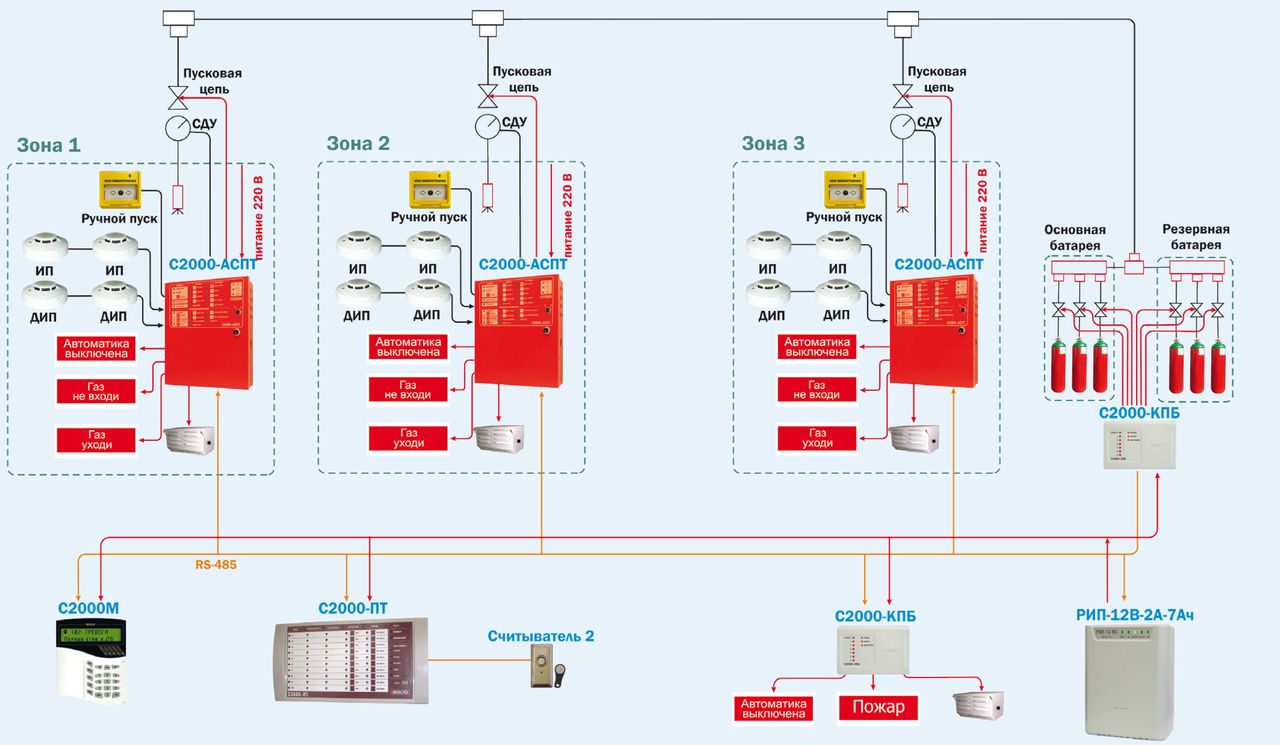
Substances used in gas extinguishing systems
The compositions used in such modules differ in state, physical and chemical characteristics, so the choice of optimal components is a rather difficult task. To solve it, many factors must be taken into account: the type of combustible substance, the geographical location of the object, the cost of gas fire extinguishing, and many others.
To date, chladones (fluorocarbons), as well as natural inert diluent gases and mixtures thereof are used to eliminate fires. The list of substances used in gas extinguishing installations is indicated in the Code of Rules SP 5.13130.2009. The use of components not included in this list is permitted only in accordance with additionally developed specifications for a particular object.
In modern gas fire extinguishing installations, the following compositions are used:
- carbon dioxide (CO 2). It is a colorless substance with a density of up to 2 kg / m 3. The mechanism of gas fire extinguishing is the displacement of oxygen. With a decrease in its concentration to 12%, combustion processes are inhibited;
- inert gases and their mixtures - most often gas, fire extinguishing modules use nitrogen, argon, inergen and argonite. They are safe and do not contain toxic components. The mechanism of gas fire extinguishing in such automatic installations is to dilute oxygen. When a substance is supplied, the concentration of O 2 in the room decreases to a level at which the combustion process stops. The main feature of these gas fire extinguishing systems is their inertness - they do not react with equipment and living tissues. Moreover, to ensure the proper fire extinguishing effect of such modules, an accurate calculation of the amount of substance is required;
- freons (freons). These are hydrofluorocarbons that are used in gas extinguishing installations. The mechanism of action of these substances is based on restraining the combustion reaction and cooling the surface. The main advantage of automatic gas fire extinguishing systems operating on freon is the low concentration of the active substance. This allows you to use some of them to protect rooms with people.
The most popular gas extinguishing agents at present are: freon-125, freon-227еа, fluoroketon ФК-5-1-12 (Novec-1230), inergen. The choice of a specific type of substance is determined by the design organization or the customer’s task, depending on the type of protected object and its features.
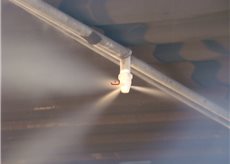
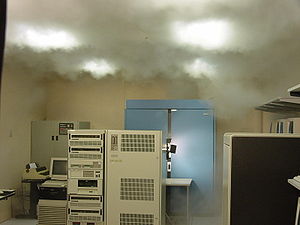
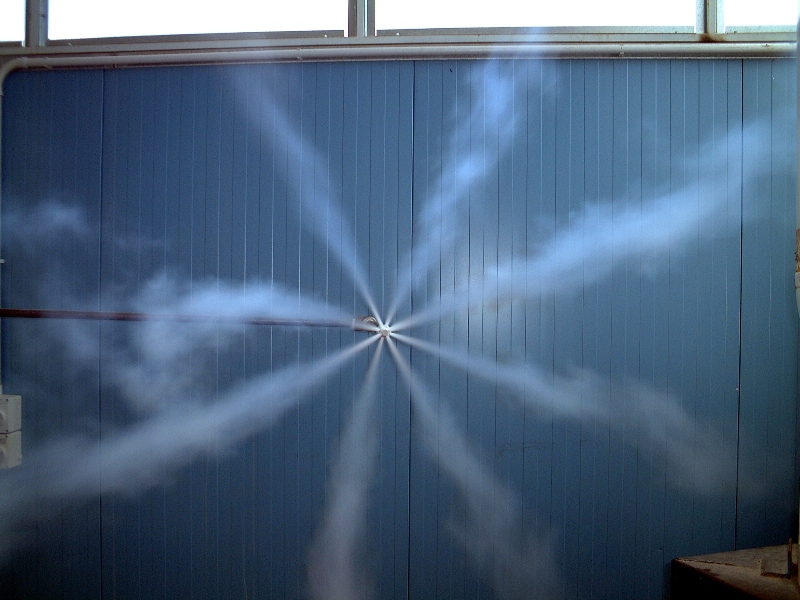
Gas extinguishing with diluents
Among the substances of this type used in the fire extinguishing module system, carbon dioxide is the most common. The action of inert diluents leads to a decrease in the oxygen content in the air: when its proportion is less than 12%, combustion stops.
Such gas extinguishing modules can only be used in rooms where there are no people. For normal human breathing, it is necessary that the oxygen content in the air is 21%. This circumstance imposes a restriction on the use of inert diluents in gas fire extinguishing.
Maximum permissible concentration
|
Name |
Chemical formula |
Molecular mass |
Boiling point, ° C |
Pressure at 20 ° C, MPa |
Fire extinguishing concentration,% (vol.) |
The density of the vapor, kg / m 3 |
Given fire extinguishing concentration, kg / m 3 |
MAC (NOAEL),% (vol.) |
|
Freon 125 |
||||||||
|
Freon 227еа |
CF 3 CF 2 CF 2 H |
|||||||
|
Freon 318Ts |
||||||||
|
CF 3 CF 2 C (O) CF (CF 3) 2 |
HFC-based gas fire extinguishing systems
This type of equipment has an operating principle based on chemical inhibition - a sharp slowdown in the combustion reaction. When triggered unattended installation gas fire extinguishing freons fall into the combustion zone. There they enter into a chemical reaction with the primary products, and as a result, the flame goes out.
Advantages of gas fire extinguishing using inhibitors:
- high efficiency;
- preservation of oxygen in the air necessary for breathing of people in the room;
- low toxicity;
- thermal stability of the substances used;
- no harm to the ozone layer.
Automatic refrigerant-based gas fire extinguishing systems are widely used for rooms where people can be. The characteristics of each of the components used include two types of concentration: maximum permissible and fire extinguishing. The difference between these values \u200b\u200bis called safety margin. This indicator determines how much the substance is suitable for use in the system of gas fire extinguishing modules in rooms where people are located.
Advantages of cooperation with NPF Garant
The accumulated experience and developed material and technical base allow the company to comprehensively approach the execution of work and successfully implement projects even at large industrial enterprises.
Our advantages:
- transparent terms of interaction with the customer;
- flexible system for preparing estimates;
- competitive offers;
- professional design based on a preliminary survey of the object;
- optimal equipment selection for each specific case;
- consulting support of the client at all stages of cooperation.
You can always clarify the cost and installation conditions of a gas fire extinguishing module system by calling the Contacts page.
More details about such extinguishing agentsah can be found in the "Articles" section.
Gas extinguishing agent (GOTV) - a gaseous substance with physical and chemical properties that allow creating conditions for the cessation of combustion.
The choice and application of certain GOTVs is determined by several factors, the main of which are safety for humans, the environment, protected equipment, as well as economic feasibility.
Work examples
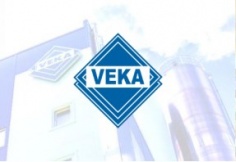
GAS EXTINGUISHING
This is a fire extinguishing method in which gas extinguishing compositions are used to extinguish fires and fires. An automatic gas fire extinguishing installation usually consists of cylinders or containers for storing a gas fire extinguishing agent (GOTV), gas that is stored in these cylinders under pressure (tanks), control units, pipelines and sprayers, which ensure the delivery and release of gas to the protected room, the receiving device -control and fire detectors.
In recent decades, automatic gas fire extinguishing systems using ozone-friendly freons — HFC 23, HFC 227 ea, HFC 125 — have been widely used. In addition, HFC 23 and HFC 227EA are used to protect the rooms in which people can or are located.
Freon 125 is used as an extinguishing agent to protect rooms without the constant presence of people.
Carbon dioxide is widely used to protect archives and cash vaults.
Gas fire extinguishing systems are used in cases where the use of water can cause a short circuit or other damage to equipment - in server rooms, data warehouses, libraries, museums, on aircraft.
Automatic gas fire extinguishing installations should provide:
- timely fire detection fire alarmincluded in the automatic gas fire extinguishing installation
- the possibility of delaying the supply of a gas extinguishing agent during the time necessary for the evacuation of people from the protected premises
- creation of a fire extinguishing concentration of a gas fire extinguishing substance in a protected volume or above the surface of a burning material in the time required to extinguish a fire
In the protected room, as well as in adjacent rooms, which have access only through the protected room, when the unit is triggered, the light devices (the light signal in the form of inscriptions on the light boards “Gas - go away!” And “Gas - do not enter!”) And sound alerts in accordance with GOST 12.3.046 and GOST 12.4.009.
A gas fire extinguishing system is also used as an integral part in explosion suppression systems, and is used for phlegmatization of explosive mixtures.
In connection with the strengthening of measures to protect the environment, and taking into account the desire of the customer to reduce the costs of maintaining security systems, a competitive GOTV must meet the following requirements:
- do no harm to humans
- do not affect the environment
- occupy a minimum of space on the protected object
- be comfortable to operate
- extinguish a fire effectively
3M Corporation has developed the innovative Novec ™ 1230 GOTV (Novek 1230), the future in fire fighting that takes into account all these requirements.
Advantages of 3M ™ Novec ™ 1230 (Novec 1230):
- Safety for humans
- Environmental safety
3M ™ Novec ™ 1230 (Novek 1230) does not contain bromine and chlorine. Molecules 3M ™ Novec ™ 1230 (Novec 1230) decay under the influence of solar radiation within five days. Thus, it does not have any impact on climate change on our planet.
- Compact fire extinguishing system
AGPT using 3M ™ Novec ™ 1230 (Novek 1230) requires a minimum of storage space (see also the section “System Cost”).
- Convenience of operation of fire extinguishing system
3M ™ Novec ™ 1230 (Novek 1230) is transported without problems in the form of a liquid: without pressure, without marking “dangerous goods”. Refueling is possible on site. 3M ™ Novec 1230 cylinders are stored under 25 bar pressure. Since the vapor pressure in the cylinder is negligible, there is no need for vents used for safety reasons in high-pressure systems.
- Extinguishing Effectiveness
Although 3M ™ Novec ™ 1230 (Novek 1230) resembles a liquid in appearance (it is often called dry water), it absorbs heat much better than water, because it has weak molecular bonds. For example, a Class A fire (solid burning) a system using 3M ™ Novec ™ 1230 extinguishes no more than 10 seconds. The system is also designed to extinguish fires of classes B, C, D and E.
- Safety for Electronics
Prices for gas fire extinguishing systems in our company are set depending on the range of services provided, which may include:
- own production of equipment and components
- development of design documentation
- equipment selection
- commissioning works
- assistance in the delivery of the facility to the operational commission.
Automatic gas fire extinguishing installations - an effective element of integrated fire protection of premises for various purposes. Such installations operate in conjunction with, which detects signs of fire and activates the device.
The effectiveness of the modules depends on the correct selection of a gas extinguishing agent (GOTV), depending on the characteristics of the protected premises. If the GOTV selection, design and installation of the installation were carried out professionally, the system eliminates the fire or localizes the fire before arrival fire brigade, which will significantly reduce possible damage.
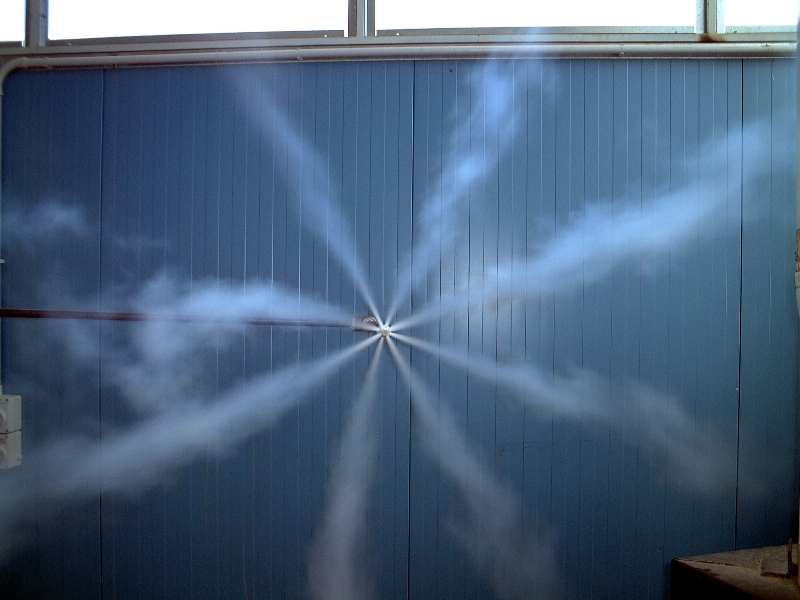
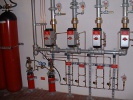
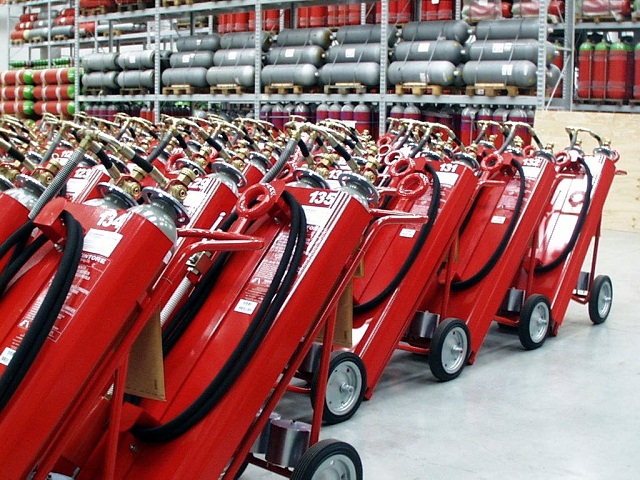
Gas extinguishing module
IHL, or gas fire extinguishing modules, are used to extinguish solids (except light and alkali metals), as well as liquids and ignited gases (fires, classes A, B and C). They can also extinguish electrical wiring or de-energized electrical equipment. Special fire extinguishing gas (GOTV) is able to be stored in IHL under pressure for a long time.
In the event of a fire in a controlled room, a fire extinguishing gas is released, after which it fills the entire space where there is a quick elimination of all burning foci.
The extinguishing mechanism depends on the type of GOTV. Usually this is a decrease in oxygen concentration, inhibition of the chemical reaction of combustion, cooling of the combustion zone, or a combination of several mechanisms. The extinguishing method is voluminous, therefore, gas is efficient in confined spaces (the premises should not have constantly open apertures), while gas will not damage property and will not cause material damage.
Installation of a gas fire extinguishing system begins with the calculation of the parameters of the protected premises (volume and area of \u200b\u200bthe room, the presence of ventilation, employees and the fire hazard class).
The Flame E1 company has been specializing in the implementation and installation of such modern fire safety systems for several years. In our assortment you will find installations and containers for gas storage, designed for rooms of any volume.
Experienced employees of Flame E1 will analyze the premises, types of materials and stored property, after which they will recommend the type of gas and installation design. We have equipped gas fire extinguishing systems with more than one large facility in Russia, and many state and commercial organizations are our regular customers.
The gas was first used to extinguish a fire in the late 19th century. And the first in gas fire extinguishing installations (UGP) was carbon dioxide. At the beginning of the last century, Europe began to produce carbon dioxide plants. In the thirties of the twentieth century, fire extinguishers with freons, fire extinguishing agents such as methyl bromide were used. For the first time in the Soviet Union, devices using gas to extinguish a fire. In the 40s, isothermal tanks began to be used for carbon dioxide. Later they developed new extinguishing agents based on natural and synthetic gases. They can be classified as freons, inert gases, carbon dioxide.
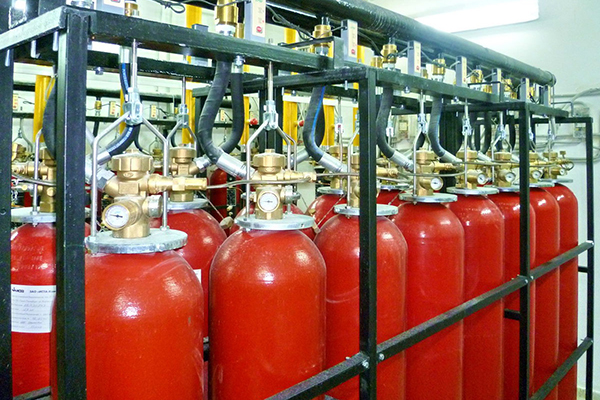
Advantages and disadvantages of extinguishing agents
Gas installations are significantly more expensive than systems using steam, water, powder or foam as a quenching agent. Despite this, they are widely used. The use of UGP in archives, storerooms of museums and other storages with combustible values \u200b\u200bbeyond competition, due to the practical absence of material harm from their use.
Besides . Using powder and foam can ruin an expensive technique. Gas is also used in aviation.
The speed of gas distribution, the ability to penetrate into all cracks, allows the use of installations based on it to ensure the safety of rooms with a difficult layout, suspended ceilings, many partitions and other obstacles.
Application gas installationsworking on the basis of dilution of the atmosphere of the object, requires collaboration with integrated security systems. For guaranteed fire extinguishing, all doors and windows must be closed and forced ventilation must be turned off or natural ventilation closed. To alert people who are indoors, light, sound or voice signals are given, a certain time is given for exit. After that, fire extinguishing begins directly. Gas fills the premises, regardless of the complexity of its layout, for 10-30 seconds after the evacuation of people.
Installations using compressed gas can be used in unheated buildings, as they have a wide temperature range, -40 - +50 ºС. Some GOTVs are chemically neutral, do not pollute the environment, and HFC 227EA, 318Ts can also be used in the presence of people. Nitrogen plants are effective in the petrochemical industry, when extinguishing fires in wells, in mines and other facilities where explosive situations are possible. Installations with carbon dioxide can be used for operating electrical installations with voltage up to 1 kV.
Disadvantages of gas fire extinguishing:
- the use of GOTV is ineffective in open areas;
- gas is not used to extinguish materials that can burn without oxygen;
- for large objects, gas equipment requires a separate special extension to accommodate gas tanks and related equipment;
- nitrogen plants are not used for extinguishing aluminum and other substances that form nitrides that are explosive;
- it is impossible to use carbon dioxide to extinguish alkaline earth metals.
Gases used to extinguish fires
In Russia, the types of gas extinguishing agents permitted for use in carbon dioxide gas are limited to nitrogen, argon, inergen, freons 23, 125, 218, 227еа, 318Ц, carbon dioxide, sulfur hexafluoride. The use of other gases is possible with the coordination of technical conditions.
Gas extinguishing agents (GOTV) according to the method of extinguishing are divided into two groups:
- The first is freon. They extinguish the flame with a chemical slowdown in the burning rate. In the ignition zone, chladones disintegrate and begin to interact with the combustion products, this reduces the burning rate to complete attenuation.
- The second is gases that reduce the amount of oxygen. These include argon, nitrogen, inergen. Most materials require more than 12% oxygen in a fire atmosphere to maintain combustion. By introducing an inert gas into the room, and reducing the amount of oxygen, the desired result is obtained. What fire extinguishing agent in gas extinguishing installations must be used depends on the object of protection.
Note!
According to the type of storage, GOTV are divided into compressed (nitrogen, argon, inergen) and liquefied (all others).
Fluoroketones - a new class of extinguishing agents, developed by 3M. These are synthetic substances that are similar in effectiveness to freons and are inert due to their molecular structure. The extinguishing effect is obtained at concentrations of 4-6 percent. Due to this, it becomes possible to use in the presence of people. In addition, unlike freons, fluoroketones quickly decompose after use.
Types of gas fire extinguishing systems
Gas fire extinguishing installations (UGP) are of two types: station and modular. To ensure the safety of several rooms, a modular UGP is used. For an entire facility, a station setup is usually used.
Components of gas treatment units: gas fire extinguishing (IHF) modules, nozzles, switchgears, pipes and GOTV.
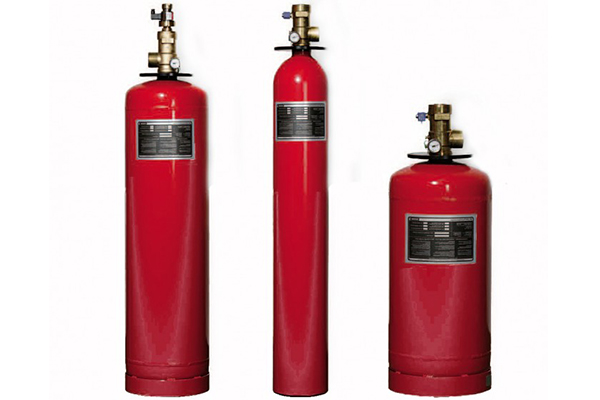
The main device on which the operation of the installation depends is the IHL module. It is a reservoir with a locking-starting device (ZPU).
It is better to use cylinders with a capacity of up to 100 l in work, since they are easy to transport and registration at Rostekhnadzor is not required.
Currently, more than a dozen domestic and foreign companies are using IHL on the Russian market.
The best five modules of IHL
- OSK Group is a Russian manufacturer of fire extinguishing devices with 17 years of development experience in this area. The company produces devices using Novec 1230. This extinguishing agent is used in gas fire extinguishing installations that can be used in energy and similar facilities in the presence of people. ZPU with the manometer and a safety explosive membrane. Available in volumes from 8 liters to 368 liters.
- MINIMAX modules from a German manufacturer are particularly reliable due to the use of seamless vessels. MGP range from 22 to 180 liters.
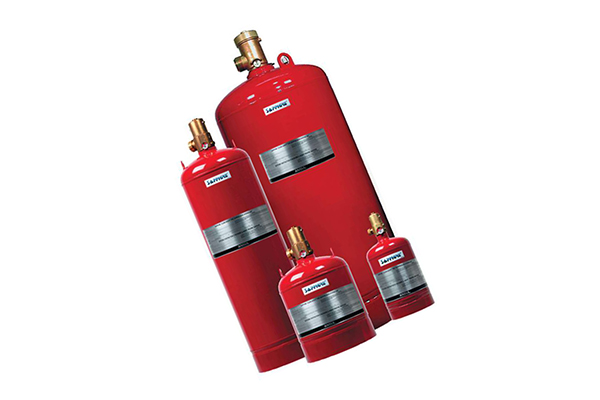
- In the IHL development of the company “VFASpekt”, welded tanks of low pressure are used, as refrigerant gas, they are freon. Available in volumes of 40, 60, 80 and 100 liters.
- IHP “Flame” are produced by the NTO “Flame” company. Use tanks for compressed gases of low pressure and freons. A large line is produced from 4 to 140 liters.
- Modules from Spetsavtomatika are available for high, low pressure and freon compressed gases. The equipment is easy to maintain, efficient in operation. There are 10 sizes of MGP from 20 to 227 liters.
In modules of all manufacturers except electric and pneumatic start-up, manual start-up of devices is provided.
The use of new gas extinguishing agents such as Novec 1230 (fluoroketone group), as a result, the possibility of extinguishing a fire in the presence of people increased the effectiveness of gas treatment due to early response. And the harmlessness of using GOTV for material assets, despite the significant cost of equipment and its installation, become a serious argument in favor of the use of gas fire extinguishing systems.


